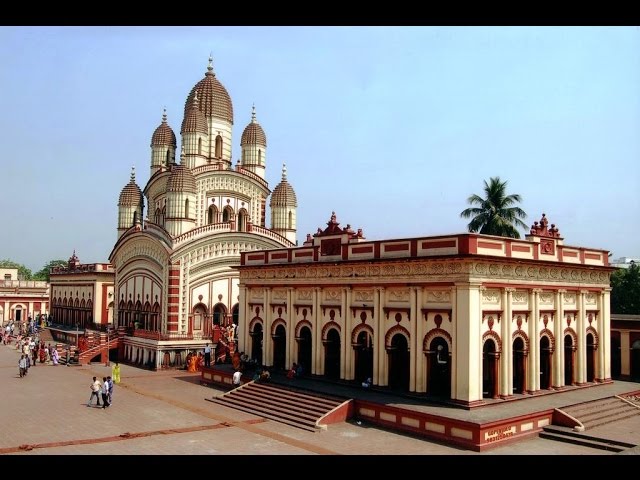Overview of Dakshineswar Kali Temple
Dakshineswar Kali Temple is a renowned Hindu temple dedicated to Goddess Kali, located in Dakshineswar near Kolkata, India. It was built in 1855 by Rani Rashmoni, a philanthropist and devotee of Kali, and it remains one of the most important pilgrimage sites in Kolkata. The temple complex is not only a place of worship but also a center of spirituality and cultural heritage.
Historical Significance
- Foundation by Rani Rashmoni: The temple was constructed by Rani Rashmoni, who dedicated it to Goddess Kali after a divine inspiration. She played a significant role in establishing the temple and fostering religious practices in the region.
- Association with Sri Ramakrishna Paramahamsa: The temple gained prominence due to its association with Sri Ramakrishna Paramahamsa, a revered mystic and spiritual leader who served as the temple’s priest. His teachings and spiritual practices attracted devotees and disciples from all over India.
Architectural Marvel
- Temple Design: Dakshineswar Kali Temple follows traditional Bengali temple architecture, featuring a nine-spired main temple with a central sanctum dedicated to Goddess Kali. The temple complex includes smaller shrines dedicated to other deities, surrounded by spacious courtyards and gardens.
- Navaratna Style: The main temple is constructed in the Navaratna style (nine spires), reflecting a blend of Bengali and Mughal architectural influences. The temple’s design symbolizes the divine presence and spiritual significance of Goddess Kali.
Spiritual and Cultural Significance
- Religious Practices: Devotees visit Dakshineswar Kali Temple to seek blessings from Goddess Kali for protection, prosperity, and spiritual fulfillment. Rituals and ceremonies, including daily worship (aarti) and festivals like Kali Puja and Durga Puja, are conducted with great reverence.
- Philosophical Teachings: Sri Ramakrishna Paramahamsa’s teachings on spirituality, religious tolerance, and the unity of all religions continue to inspire visitors and followers worldwide. His presence at Dakshineswar Kali Temple has made it a center for spiritual enlightenment and philosophical discourse.
Visitor Experience
- Pilgrimage Destination: Dakshineswar Kali Temple attracts thousands of pilgrims and tourists annually, seeking spiritual solace and cultural immersion. The temple’s serene ambiance, riverfront location (on the banks of the Hooghly River), and historical significance make it a must-visit destination in Kolkata.
- Accessibility: The temple is easily accessible by road and rail from Kolkata city. Visitors can also take boat rides on the Hooghly River to experience the scenic beauty surrounding the temple complex.
Conclusion
Dakshineswar Kali Temple stands as a symbol of devotion, architectural splendor, and spiritual heritage in Kolkata. It continues to inspire devotees and visitors with its rich history, religious practices, and association with Sri Ramakrishna Paramahamsa. A visit to Dakshineswar Kali Temple offers a profound glimpse into Bengal’s religious traditions and cultural ethos, making it a significant pilgrimage site and cultural landmark in India.






Leave feedback about this